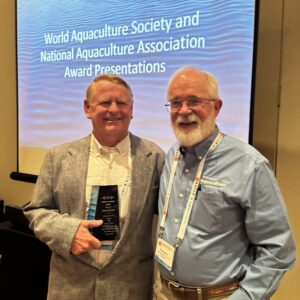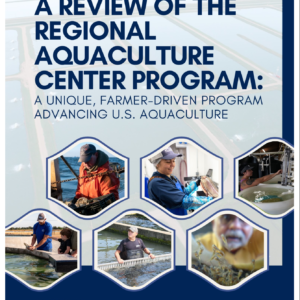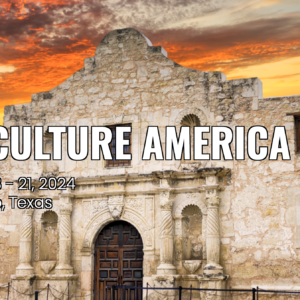Our Mission
The California Aquaculture Association promotes the production of plants and animals in aquatic systems to satisfy the needs of consumers for wholesome products that are produced by sustainable means conserving California’s natural resources.
Our Members
Grow many different species of finfish, shellfish, and seaweed (see below) for a variety of applications including pond and lake stocking, ocean restoration, climate change mitigation, to restaurants/chefs, direct to consumer – and so much more!
What is aquaculture?
Aquaculture is the rearing of plants or animals in water. While most production is for human consumption, aquaculture products are also used for livestock feeds, to enhance wild stocks, to mitigate climate change (carbon sequestration), in medicine, bioremediation, biofuels, etc. – the list goes on!
Why aquaculture?
Demand for seafood is increasing. The supply of wild caught fish is limited, and landings have been flat since the 1990s. Aquaculture (farming in water) is an environmentally responsible and very efficient method of protein production that helps meet our growing demand for seafood, mitigate climate change, and supplement fisheries in fresh and saltwater.
What is aquaculture’s role in restoring our ocean’s ecosystems?
Due to the effects of climate change, increasing ocean acidification, and rising demand for seafood, our oceans need our help. Some of our members are directly involved with restorative programs aimed at replenishing and reviving our ocean’s fragile ecosystems and fish stocks.
What about sustainability?
With a feed conversion ratio near 1:1, finfish aquaculture is the most sustainable and efficient method of animal protein production. And as feed producers have increasingly moved toward plant-based feed substitutes, the “fish in, fish out” (FiFo) ratio, the amount of wild fish needed in feed to produce a pound of farmed fish, is equal to or less than 0.5:1. Other forms of aquaculture like shellfish and seaweed farming require no feed inputs! In fact, shellfish filter the water and seaweeds remove excess dissolved nutrients and CO2, as well as providing habitat for other organisms.
What about water use?
Aquaculture is often low to non-consumptive use of water, especially farming in the ocean and recirculating aquaculture systems (RAS) on land. Often, water is recycled, or it’s simply borrowed, moving on to grow other crops that are important to agriculture and wetland restoration, making water that leaves fish farms a valuable resource. Integrated methods of aquaculture like aquaponics are also making limited freshwater supplies much more productive.
Go fish?
California fish farmers stock 100% of the warm-water fish (bass, blue gill, catfish) and 45% of all cold-water fish (trout, white sea bass) in California lakes and streams, helping drive fishing license sales by millions of dollars and supporting an $4.6 billion recreational fishing economy in California.
What about antibiotics?
Drugs use is tightly controlled by the FDA, and any drugs administered must be prescribed by a DVM. In the U.S., no antibiotics and very few therapeutics are approved for use with aquatic animals. And strict withdrawal times are followed. Fish culture practices that provide a healthy environment and best nutrition ensure therapeutics are used sparingly.
Should I buy local?
Yes – we should all support our local farmers and regional economies. Food security starts at home and so does food safety. U.S. aquaculture producers must adhere to strict environmental and product safety rules and regulations. So, you can rest assured knowing that the fish you’re eating is safe. (By the way, over 85% of the seafood consumed in the U.S. is imported. So, whenever possible, buy local.)
What do California Aquaculture Association members grow?
California Aquaculture Association (CAA) producers grow a wide variety of products including abalone, algae, bass, bluegill, carp, catfish, mussels, oysters, perch, seaweed, salmon, sturgeon/caviar, tilapia, trout and more for pond and lake stocking, ocean restoration, climate change mitigation, to restaurants/chefs, direct to consumer – you name it!






